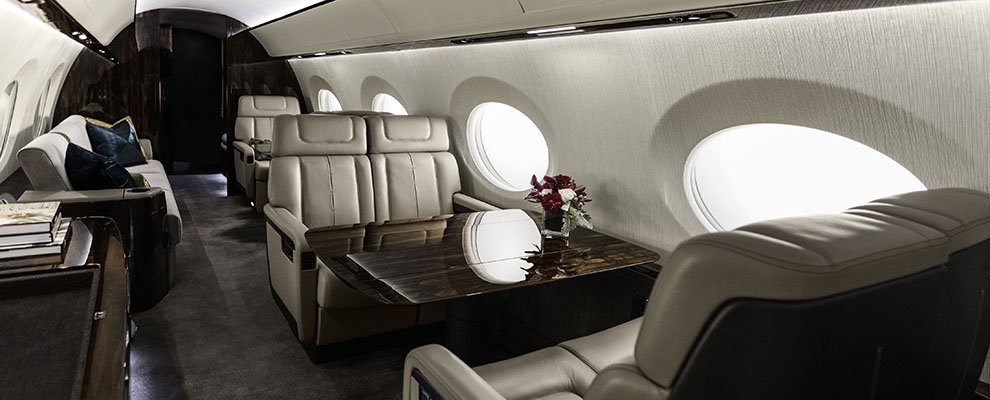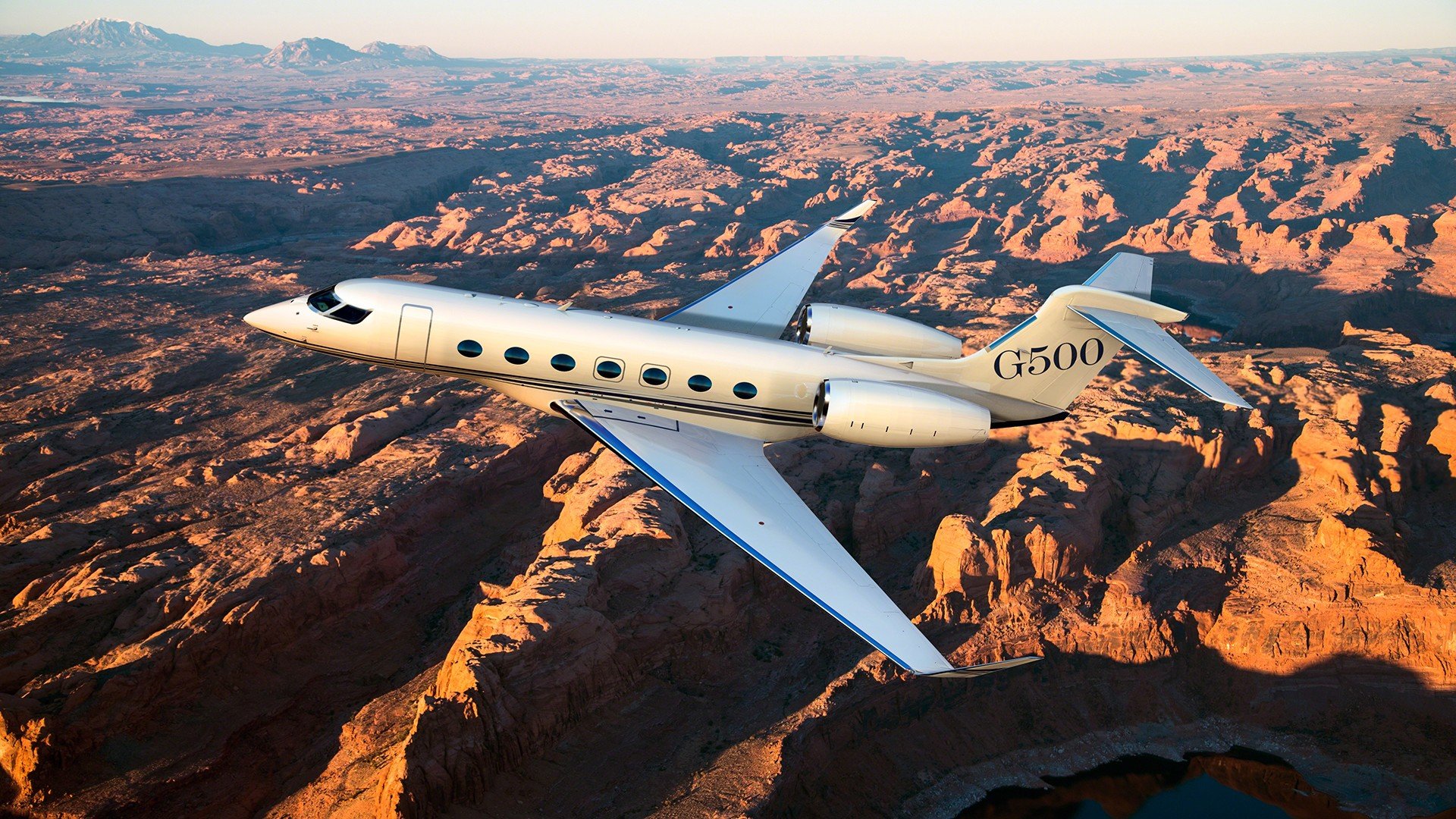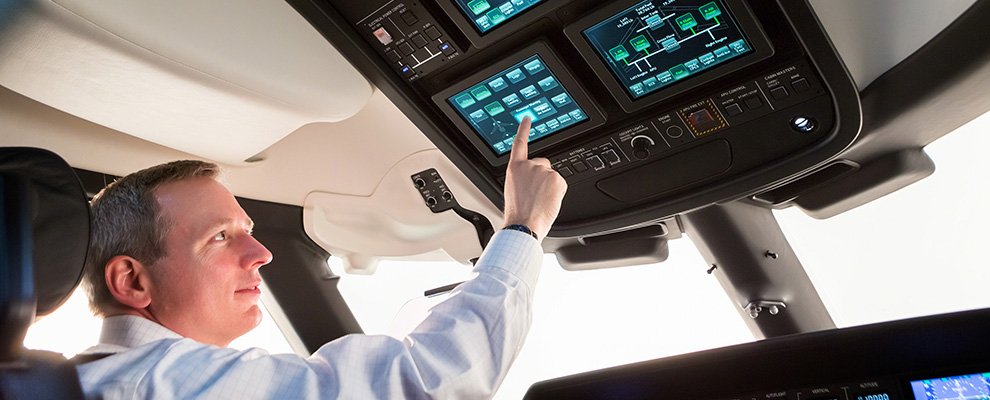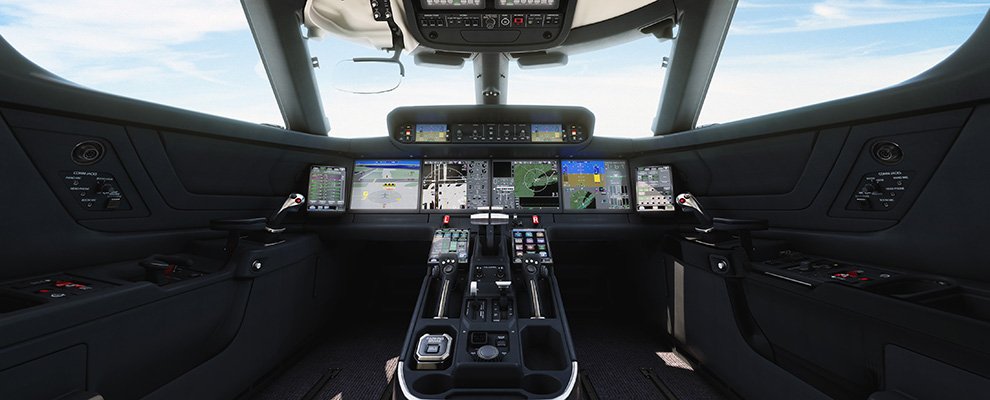First delivered in 2012, the $66.8 million Gulfstream G650 (and subsequent G650ER extended range jet) won praise for their speed and range, which set new standards in the private jet world. In October 2014, not long after the first G650 was delivered, the Savannah, Ga.-based company announced it was developing a duo of business jets, the G500 and G600, that would incorporate the improved speed and range of the G650 but cost less; the G500 will start at $44.65 million and the G600 at $55.65 million. The two jets will also feature four upgraded safety and security features that add to their already considerable appeal.

01. Cabins That Make Private Meetings Possible
From layouts to fabrics and colors, Gulfstream plane cabins are designed according to customer specifications, with the design process starting about 18 months before the plane is delivered. Given how much time passengers can spend in the air, interiors matter: The G500 and G600 have maximum ranges of 5,000 and 6,200 nautical miles and could travel nonstop from Los Angeles to London.

That long flight is a full workday for business travelers, so Gulfstream has cabin options that ensure they can conduct private meetings on their planes. During the design process, customers can choose to create meeting areas separated by doors. Gulfstream has also begun experimenting with separators that have “adjustable opacity”—clear surfaces that can turn opaque if there’s a need for extra privacy. But it’s not just visuals that matter. “We pay a lot of attention to sound,” says Naveed Aziz, director of completions in the research and development department at Gulfstream. “Our cabins are very quiet, so we’re cognizant of the fact that once we’re providing segregated compartments, we need to account for sound as well.”
02. Secure Wi-Fi Networks That Meet IT Department Requirements
Gulfstream primarily caters to business travelers, which means making secure but reliable Wi-Fi access a particular priority. “We have to walk a balance between protecting [customers’] security and making the system challenging to manage,” says Bob Geary, Gulfstream’s chief engineer for advanced cabin research and development. “The other significant aspect is making sure that none of the network devices can access or affect any of the aircraft’s flight systems. Obviously, we prioritize that.”
Gulfstream planes come with cabin servers that control Wi-Fi access during flight, and the G500 and G600 include a newly updated fifth-generation version of this server. Only Gulfstream can make certain changes to the server and wireless network, so the company works closely with businesses that have internal cyber security requirements. “Another level of password is provided to customers or their IT organizations so that they can manage their wire plan encryption,” Geary says. “In some cases the customers actually have IT security requirements where they don’t want us to have those passwords.”

03. Intuitive Touchscreens That Make It Easier for Pilots to Fly the Plane
The G500 and G600 include the innovations, such as updated avionics, more ergonomic seats and quieter cabins, that came with the G650. But they also include several new features. The plane’s new flight deck, for example, features a touchscreen design. “One of the main tasks the test pilots were given was adding capability and functionality, but at the same making the system more intuitive,” says engineering test pilot Scott Evans. When development for the G500 and G600 program began in the mid-2000s, iPhones and iPads were exploding in popularity. “We were instantly attracted to the convertibility and configurability of a touch display.”
To study the impact of in-flight turbulence, the testing process involved driving Evans and other test pilots over bumpy roads while they used the screens. The resulting touchscreen flight deck means that pilots have all their controls—quickly updatable by Gulfstream—in one place. “We now have one primary interface rather than having, in some cases, three or four different interfaces or switches and controls spread around the flight deck,” Evans says. “When we operate an airplane, we operate it in phases: We have to start it up, taxi it, take it off, climb it, cruise it, descend it and land it. Now we can have menus dedicated to each of those phases that give the crew exactly what they need for that particular phase.”
04. Cockpit Updates That Improve Crew Performance
Planes have traditionally been built with column and yoke controls in front of the pilot. Recent years have seen a move toward the adoption of sidestick controls. “The flight deck is our office, our living room, our dining room,” Evans says. “The bigger we can make it, the more comfortable we are as a crew. If we can remove the column and yoke and go to sidesticks, we make the flight deck bigger without having to make the outside of the airplane bigger.”
But the G500 and G600 sidesticks, which are manufactured by BAE Systems, also have a new feature that will make using them even more intuitive. Sidestick technology has thus far been passive, which means that each control moves independently of the other. But BAE developed active control technology that moves both sidesticks simultaneously, which allows co-pilots to feel what the other is doing. Column and yoke controls utilize active control technology, but the G500 and G600 are the first commercial planes to use active control sidesticks (they’ve previously been used on military planes). “In a traditional column and yoke environment, the movement becomes an unspoken language between us,” says Evans. “But in a passive [sidestick] system, that situational awareness is lost. You can’t see whether an issue with a plane is pilot-induced or aircraft-induced.”
The result is planes that are easier to fly, even in difficult situations. “Airplanes are time machines,” says Evans. “We can leave New York and be on the other side of the world in half a day—but usually people are wanting to do that through the night. [The pilots] are off their circadian rhythms, so we have degradation in overall performance. The more tools we can give a crew to increase situational awareness without a lot of cognitive thought, the safer the product.”













